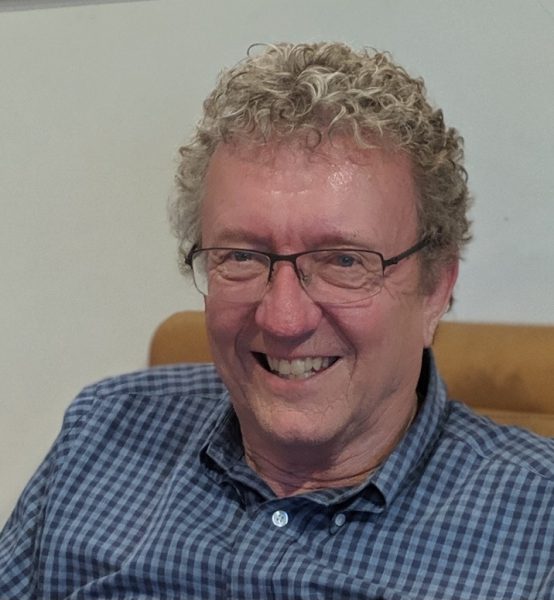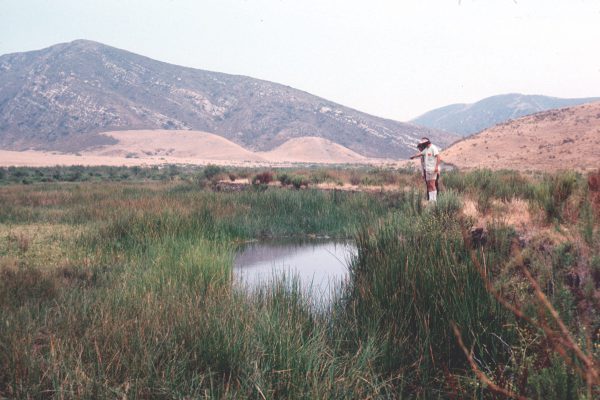
Why doesn’t Aliso Creek look like most of the rivers in southern California—those desolate concrete channels that replace the vegetation and naturally flowing meandering streams? What inspired Orange County to plan for a natural stream with trails that the public can enjoy?
In 1973, a group of volunteers envisioned that Aliso Creek could be preserved, but this was a “last stand” effort. The county was growing so fast that if the natural Aliso Creek was lost, all the other open spaces, including the Laguna Greenbelt, could also be lost to development.
Approximately 26 volunteers, under the auspices of the Saddleback Area Coordinating Council and UCI Extension, formed the Study Team on Aliso Creek. The purpose was to save the 19-mile-long Aliso Creek from channelization and to make land-use recommendations, such as trails, for the entire creek corridor from the Cleveland National Forest in upper El Toro to the ocean at Aliso Beach. I was part of this study team.

The group met weekly from November 1973 until August 1974. Guest speakers, such as noted landscape architect Francis Dean, and local planners, engineers and naturalists, inspired and advised us.
Saturday field trips hiking the creek created detailed familiarity with conditions on the ground as we examined specific issues.
Our study team leader was Corona del Mar architect Ron Yeo, a former Orange County Planning Commissioner.
Ron led the UCI Open Space Program for “Project 21,” a plan to guide growth in Orange County into the twenty-first century.
Five of the 26 members were from Laguna Beach: Fred Lang, Judith Hamburger, Steve Malefyt, Van Stephens and myself. The others were from Leisure World/El Toro/Mission Viejo area and included several county planners and engineers who lived in the area and participated as individuals. Leisure World [now Laguna Woods] participants included retired teachers, hikers, equestrians and natural history experts. Other team contributors were representatives of local planning and engineering firms.
During our meetings and field trips, we brainstormed land-use issues, vehicular and pedestrian circulation, potential trail locations, and related recommendations. We were emphatic in avoiding the postwar concrete channelization that had already devastated Aliso Creek in the first residential subdivisions north of the 5 Freeway in the 1960s.
Our final report was titled “Aliso Creek: Forest to the Sea.” Ron Yeo arranged for our recommendations to be presented to the Orange County Board of Supervisors in August 1974 at their formal hearing room in Santa Ana. Judith Hamburger, Jon Petke and I volunteered to prepare a nine-minute slide show with taped narration and music. Our goal was to “melt the supervisors’ hearts” by showing the creek corridor’s natural beauty. After the presentation, the supervisors voted unanimously to accept our planning document and to instruct county staff to incorporate our recommendations into a new document: the Aliso Creek Corridor Specific Plan (completed in 1977).
The study team’s “Forest to the Sea” report initiated in 1973 led directly to creek preservation guidelines outlined in the specific plan. To implement an important part of preserving Aliso Creek and adjacent open space, the County of Orange established the 4,500 acre Aliso & Wood Canyons Wilderness Park in 1990. This open space adds a key piece to the 22,000-acre Laguna Greenbelt.
In 1975, the board re-appointed Ron Yeo to the OC Planning Commission, and I was appointed as the public member to the Aliso Creek Corridor Planning Task Group, which worked on the details of the plan implementation. Now in his ninetieth year, Ron continues his active environmental stewardship in his home community of Corona del Mar. Many of the other study team members have now passed away, including my good friends Jon Petke, Judith Hamburger, Steve Malefyt and Fred Lang, who each contributed significantly to the project’s success.
The nine-minute slide show presentation was recently digitally re-mastered. It will soon be on permanent exhibit at the Aliso & Wood Canyons Wilderness Park Visitors Center in Laguna Niguel. The presentation can also be viewed on the Laguna Greenbelt, Inc website, Lagunagreenbelt.org.
These presentations honor all those with the foresight and dedication to save the beauty of our creeks and open spaces for future generations and encourage us to continue and protect these achievements.
Bob is a Laguna Beach resident and landscape architect.




